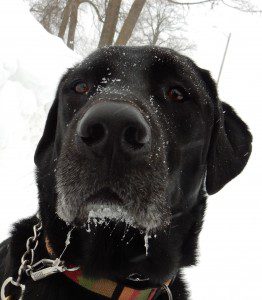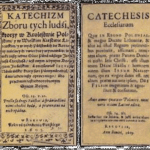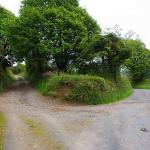 More bad news for the orthodox Soto position that Dogen was opposed to koan introspection in zazen.
More bad news for the orthodox Soto position that Dogen was opposed to koan introspection in zazen.
Modern scientific historical research supports what some of us who have experienced koan introspection and Dogen Zen have been saying for some time – Dogen offers wonderful teaching by example of how to engage the wild and rich world of koan.
Why does it matter? If you care about enlightenment, it matters. If you care about truth, it matters. If you care that Dogen’s words can inspire opening and actualizing the radiant field of awakening, it matters.
It’s high time that we reclaim Dogen’s work for koan introspection.
Enter a wonderful new book edited by Steven Heine, Dogen and Soto Zen, a collection of essays by leading Buddhist scholars about a wide range of issues regarding Dogen and, of course, Soto Zen.
Heine summarizes the purpose of the volume by suggesting it “…moves forward with ways of associating and connecting some of the dots, so to speak, in order to explore and determine to what extent Sōtō Zen represents faithfully or may misrepresent, and complements or may depart from, Dōgen’s thought in terms of such issues as meditation and monasticism, literature and philosophy, or gender and cultural memory.”
Yeah, in many ways the Soto school, reformed in the late 19th Century so as to compete with the Pure Land school and various Christian denominations, dumbed down the dharma in order to be popular with lay people and keep them coming to visit the grave sites of relatives. And give money. No need for long hours of zazen – practice and enlightenment are one! No need for those bothersome koans – the founder was purely into just sitting.
See Jiryu’s excellent recent series of blog posts for more and less on this in “Lay People: Leap Clear of Mushrooms!” and other recent posts.
Granted, our Soto forebearers probably had a bunch of noble aspirations too, including survival. I’m heartened to learn that there was a lively debate about direction for the school regarding monk and lay practice, uniformity and diversity of styles, precepts as training rules vs. ceremonial blessings, etc.
The winners in the debate, winners largely due to the positions they held rather than the merits of their arguments, stressed “just sitting” zazen as a koan-free zone and employed a doctrine of the oneness of practice and enlightenment that diminishes the importance of enlightenment (no need for bothersome striving). Strangely, this view was then transplanted here to West where lay people are not that interested in visiting grave sites on memorial days but are interested in wholehearted zazen and enlightenment.
But, come to think on it a bit, maybe it’s not so strange when zazen is regarded as a reenactment ritual, kinda like a funeral, with Zen students revisiting the cold and dead.
All the while, the Soto school has used the words of Dogen to support the 19th Century reformation by cutting and pasting (quite literally, especially in regards to what has become the most essential expression of the Soto faith, “Shushogi”). We’re inheriting a tradition that might well stand accused of dumbing down the dharma by delimiting Dogen – that’s even before we Americans got our hot little commodifying hands on the dharma.
Or as Foulk puts it (summarizing the perspective of Soto by Rinzai Zen), it is an approach “…that allows practitioners to remain smugly ensconced in delusion while believing that they are already awakened.”
Yes, to see Dogen’s teaching used to credential a cold-and-dead ideological and faith-based (rather than realization verified) “just sitting” is just sad.
The lead chapter in Dogen and Soto Zen is T. Griffith Foulk’s “Dogen’s Use of Rujing’s ‘Just Sit’ (shikan taza) and Other Koans” (underlining added) and I think I’m in love. Maybe just the Valentine’s Day spirit generalizing in a wonderful way.
Here’s Heine’s summary of Foulk’s chapter:
“A central thesis of this chapter is that Dōgen does not actually teach (or even conceive of) the mode of zazen practice—now generally referred to as shikan taza—that is attributed to him by modern Sōtō school scholars as well as Zen teachers. The instructions Dōgen does give for the practice of zazen, which Foulk analyzes in considerable detail, do not employ this term, nor do they recommend an approach that is consistent with what contemporary researchers say about just sitting.”
Foulk shows that Dogen viewed “just sitting” as a koan. As I’ve noted here before, when explaining zazen, for example, Dogen repeatedly presents the thinking/not-thinking/non-thinking koan. What does it mean that “just sitting” zazen is koan? It enlivens the practice as something to actualize in this vividly hopping along moment, the truth happening point.
The Soto orthodoxy, however, tells us that Dogen didn’t like koan, an assertion akin to the emperor claiming he was fully clothed in a splendid gown while walking around buck naked.
Foulk writes, “It is clear nevertheless that Dōgen regarded kōan literature as a repository of wisdom left by the ‘buddhas and ancestors’ in Bodhidharma’s lineage, that he embraced and recommended the study of kōans as an essential part of Buddhist practice, and that kōan commentary was the principal device he used to instruct his own disciples.”
Now, some contemporary apologists of the Soto orthodoxy begrudgingly argue that Dogen used koans but NOT for zazen. No, never. No way. Dogen was a pure zazen guy after all who would never contaminate his zazen with … what? “…A repository of wisdom.” Hmm.
However, as Foulk points out, one of the ways Dogen was creative was in his use of the koan to vivify the details of Vinaya (monastic discipline) and the reading of the sutras – two really essential aspects of the Zen life that covered what was happening in the monastery twenty-four hours a day. I’d say he koanized both the rules for everyday behavior and for reading and understanding the sutras.
For example, in “Instructions for the Cook,” Dogen writes, “Wash the [dishes] so that they are completely pure and clean, placing up high those that belong in high places and putting down low those that belong in low places. High places high and level; low places low and level.”
That last sentence quotes an important koan, thus koanizing the practice of even putting away the dishes. Dogen also does this with sutra reading. This from “Seeing Buddha” (underlined portions represent references to koan):
“The ‘becoming close to the Dharma Master’ that is spoken of [in the Lotus Sutra] is like the Second Ancestor’s eight years of serving his teacher, after which he got the marrow of a whole arm; it is like Nanyue’s fifteen years of pursuing the way. Getting the master’s marrow is called [in the Lotus Sutra] ‘becoming close to.’ When it [the Lotus Sutra] speaks of the ‘bodhisattva path,’ this is ‘I am also like this, you are also like this.’”
So this guy who is knocking down all barriers and koanizing everything in sight, low and high, from putting away the dishes to the reading and understanding the Lotus Sutra, brackets zazen as the “no koan” zone. Hmm. Does this sound right?
The orthodox position also claims that practice and enlightenment are one and so there is no “experience” of enlightenment. This dismisses the truth of immediate experience and the reports of many practitioners ancient and modern, including the likes of not only Shakyamuni Buddha but also Dogen, Ejo, Gikai, Keizan, and Meiho (the first five Soto ancestors in Japan). Even the lesser known Meiho realized enlightenment, by the way, while grappling with the koan, “What is it that makes all things wax and wane?”
Some proponents of the “no koan” zazen zone, argue that there is no evidence that Dogen used Dahui’s “keyword” method in zazen. Dogen also doesn’t say not too, of course, and his zazen instructions seem to provide a basic trellis without micro managing the actual contents. Certainly, Dogen does not say ever to keep zazen free of koan.
Further, there are places in Dogen’s writing where he advocates the use of a keyword, sometimes keyword after keyword. The guy seems to have been into the serial keyword method. For example, in the finale of “Instructions for the Cook,” Dogen exhorts us to study and realize the one word Great:
“As for what is called great mind, this mind is like the great mountains or like the great ocean. It is not biased or contentious mind…. On this single occasion you must write the word Great. You must know the word Great. You must learn the word Great.”
But if you find yourself writing, knowing or learning Great in zazen, you’ve strayed from the one true path of pure zazen?
Nah.
So what was the meaning of “Just sit” for Dogen? Foulk writes,
“Given that Dōgen undeniably treated Rujing’s ‘Just sit’ as a kōan in these and other contexts, a question that remains is this: How did he interpret the meaning of the saying? As I show in my previously published analysis of Dōgen’s commentary on the kōan that appears in the chapter of Shōbōgenzō entitled ‘King of Samadhis Samadhi,’ he allowed that the verb ‘to sit’ had a number of different meanings. In the first place there is the ‘sitting of the body,’ which presumably refers to the physical posture of zazen. What he called ‘mental sitting,’ then, would be a kind of concentrated state of mind that could be cultivated in any posture, whatever the practitioner is doing. When the practitioner is no longer attached to any physical or mental phenomena, however, that liberated or awakened state is referred to by Dōgen as the ‘sitting of the body and mind sloughed off.’ In light of this I conclude that Dōgen interpreted Rujing’s admonition to ‘just sit’ as an injunction to ‘just gain awakening.’
If so, Dogen himself did not practice or teach what is now labeled as “shikantaza” and the great founder himself had a gaining idea, too.
Like I said, it’s high time that we reclaim Dogen’s work for koan introspection.











